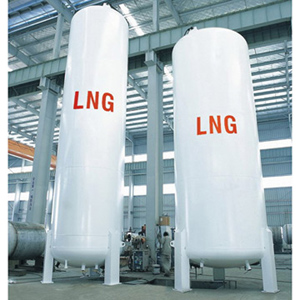April 2, 2007
LNG To The Rescue

By Michael D. Shaw
Liquefied natural gas (LNG) is natural gas (primarily methane) that has been cooled to the point that it condenses to a liquid, which occurs at a temperature of -259°F (-162°C) and at atmospheric pressure. Liquefaction reduces the volume by a factor of 600, thus making it more economical to transport in specially designed ocean vessels.
LNG is converted to its gaseous form by merely raising the temperature. Simply put, LNG technology makes natural gas available throughout the world.
It is noted that LNG has been transported and used safely in the U.S. and worldwide for over 40 years. Indeed, the only incident that affected the public occurred in 1944 in Cleveland, OH, and was no doubt exacerbated by wartime stainless steel shortages, that forced compromises in tank design. Much was learned from that accident, and the industry has compiled an enviable safety record ever since.
Currently, there are more than 100 LNG facilities in operation in the US, with more being proposed, including the BHP Billiton Cabrillo Port LNG floating storage and regasification terminal, the subject of much protest in Malibu, CA, led by actor Pierce Brosnan, best known as a former James Bond of the silver screen. Joining Brosnan are the usual suspects, along with musician Kenny G and longtime Malibu resident Olivia Newton-John.
Now, you’d think that these Hollywood Greens would be in favor of anything promoting the use of clean-burning natural gas—but you’d be wrong. In a classic example of NIMBY (Not In My Back Yard) gone berserk, the star-studded locals are raising a plethora of non-issues, falsehoods, and scare tactics, in an effort to get Governor Schwarzenegger to veto the project.
Let’s look at some of the issues…
Part of the anti-BHP campaign speaks of the facility being an “eyesore,” although its location 14 miles off the coast would make it invisible on most days.
As to safety, opponents make vague references to flammability and explosive hazards. They have to be vague, since once you get into specifics, this argument breaks down. LNG vapors are much more difficult to ignite than other types of flammable liquid fuels, including the wildly touted ethanol. Should a release occur, ignition can only take place in the limited concentration range of 5% to 15% by volume. Moreover, since the released vapor will be significantly lighter than air, it will simply rise and dissipate into the atmosphere.
Bear in mind that for a release to even occur, it would somehow have to overcome primary and secondary containment, as well as a variety of additional safeguard systems.
An explosion happens when a substance rapidly changes its chemical state (usually by ignition) or is uncontrollably released from a pressurized state. But LNG is stored at atmospheric pressure, so a puncture of the container will not create an explosion in itself, and sophisticated containment systems prevent ignition sources from coming in contact with the liquid.
What about a terrorist incident?
Given the nature and design of LNG facilities, very large amounts of energy would be required to breach containment. Assuming the 9/11 type scenario of an aircraft crashing into an LNG facility, the impact would almost certainly cause a fire fueled initially by the aircraft fuel. It may also ignite the LNG, causing a larger fire at the facility. Emergency fire detection and protection at the LNG facility/ship would be activated in such an event. Danger to the public would be reduced or eliminated by the separation distance of the facility.
In a sense, though, invoking terrorism is a straw man type of argument, in that any facility can be thought of as a terrorist target, and the majority of them could cause far greater loss of life than an LNG installation.
While the scepter of an earthquake has not been raised in this particular protest, seismic factors are taken into account during the design of any LNG facility. Notably, in 1995, none of the LNG storage tanks in the Kobe, Japan area were damaged during a 6.8 earthquake on the Richter scale, and there are no known incidences of LNG storage tank failures due to seismic activity.
Finally, the “pollution” issue, based presumably on the emissions from tankers, is a red herring at best, since there is already considerable shipping traffic in the area that will barely be impacted by the LNG project. All operations on the facility will be powered by natural gas. Sadly, there are far worse pollution problems in Malibu caused by severely overtaxed septic tanks and leach fields, that will routinely release bacterial contaminants into the nearby ocean.
It is high time that the celebs become true stewards of the environment, and get past superficial sloganeering, by embracing an already highly-regulated technology that can really do some good. North America—especially the US—is becoming the focal point of the global LNG industry, and this is a welcome change from foreign dependency.

